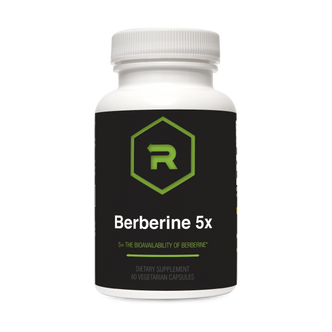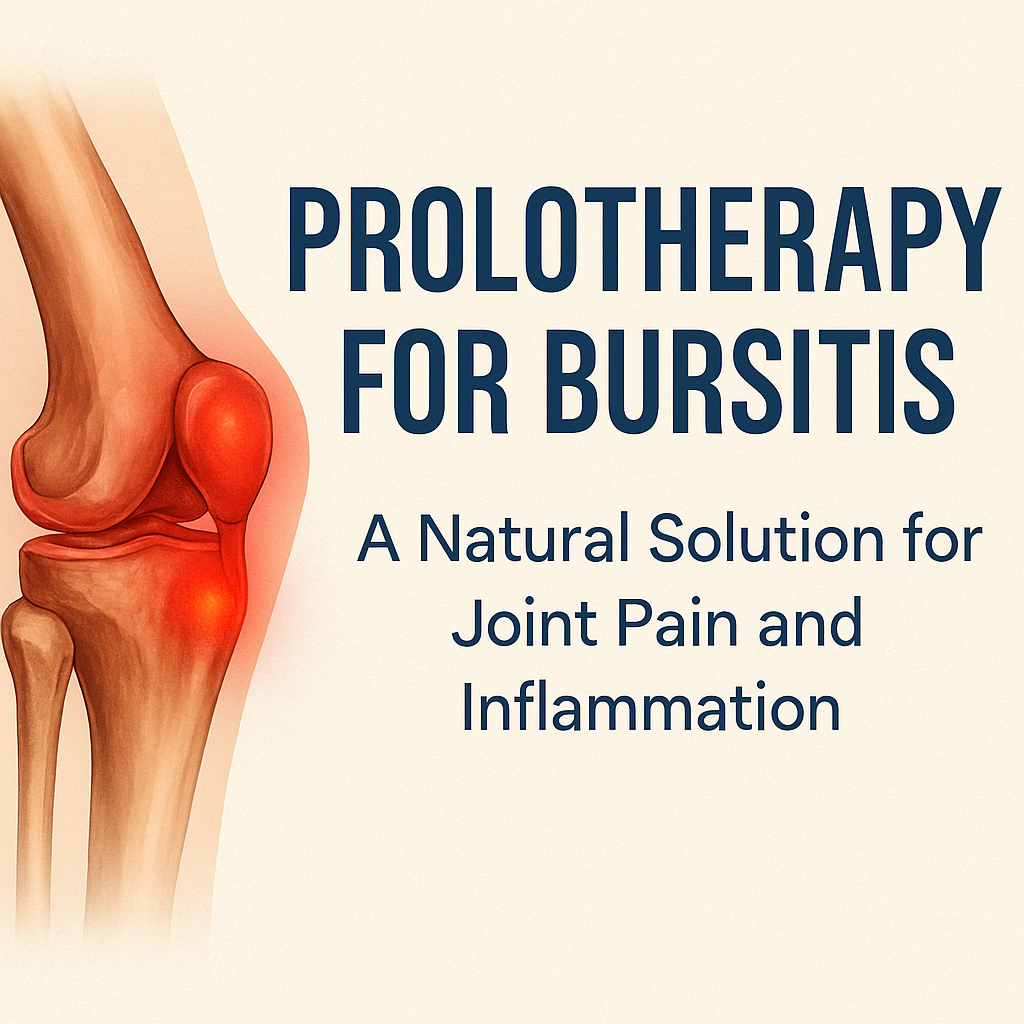Bursitis and the Healing Power of Prolotherapy: A Comprehensive Guide
Bursitis is a painful and often debilitating condition affecting thousands of individuals each year. Characterized by inflammation of the bursae—small, fluid-filled sacs that cushion bones, tendons, and muscles near the joints—bursitis can significantly impair mobility and quality of life. While conventional treatments like rest, ice, anti-inflammatory medications, and corticosteroid injections can offer temporary relief, many patients seek a more lasting, regenerative solution. Enter prolotherapy: an integrative medical approach gaining traction for its ability to repair damaged tissues and alleviate chronic pain at its root.
In this in-depth blog post, we will explore what bursitis is, its common causes and symptoms, how it's typically treated, and why prolotherapy is emerging as a promising alternative to conventional care.
What Is Bursitis?
Bursae are tiny, slippery sacs filled with synovial fluid. They are strategically located around major joints like the shoulder, elbow, hip, knee, and heel to reduce friction between moving tissues. When these sacs become inflamed, the result is bursitis.
Common Types of Bursitis
-
Subacromial bursitis (shoulder)
-
Olecranon bursitis (elbow)
-
Trochanteric bursitis (hip)
-
Prepatellar bursitis (knee)
-
Retrocalcaneal bursitis (heel)
Common Symptoms
-
Localized joint pain and tenderness
-
Swelling and redness
-
Limited range of motion
-
Pain that worsens with movement or pressure
What Causes Bursitis?
Several factors can lead to bursitis, including:
-
Repetitive motion or overuse: Common in athletes and laborers
-
Acute trauma or injury: A direct blow to the joint
-
Infection: Especially in cases of septic bursitis
-
Systemic conditions: Like rheumatoid arthritis and gout
-
Poor posture or biomechanics: Misalignment adds undue stress to joints
Conventional Treatments for Bursitis
Initial treatment for bursitis often includes:
-
Rest and activity modification
-
Ice therapy
-
NSAIDs (nonsteroidal anti-inflammatory drugs)
-
Physical therapy
-
Corticosteroid injections
-
Aspiration (draining fluid)
-
Antibiotics (for infectious bursitis)
While these treatments may alleviate symptoms, they often fail to address the underlying structural issues causing the inflammation. Corticosteroid injections, in particular, can weaken tissues over time and may even delay healing.
What Is Prolotherapy?
Prolotherapy, short for "proliferative therapy," is a regenerative injection technique used to stimulate the body’s natural healing processes. By injecting an irritant solution—commonly a dextrose (sugar) solution—into injured or inflamed soft tissues, prolotherapy provokes a mild, localized inflammatory response. This, in turn, signals the body to send growth factors and healing cells to the area, promoting tissue repair and strengthening.
Prolotherapy is particularly effective for treating:
-
Ligament and tendon laxity
-
Chronic joint pain
-
Degenerative arthritis
-
Bursitis
How Prolotherapy Works for Bursitis
In cases of chronic bursitis, especially when caused by biomechanical imbalances or repetitive stress, the underlying problem often involves ligament or tendon instability. This instability leads to excessive movement or strain on the joint, irritating the bursa.
Mechanism of Action
-
Injection of irritant solution into the area surrounding the inflamed bursa
-
Local inflammatory response activates fibroblasts
-
Fibroblast activity leads to collagen production and tissue strengthening
-
Improved structural stability reduces friction and strain on the bursa
-
Symptom relief and functional recovery
Over time, prolotherapy can restore biomechanical alignment, relieve pressure on the bursa, and prevent recurrent inflammation.
Clinical Evidence Supporting Prolotherapy
While more large-scale studies are needed, emerging evidence supports prolotherapy as a viable treatment for musculoskeletal conditions:
-
A 2010 study in Pain Physician found that prolotherapy significantly reduced pain and improved function in patients with chronic musculoskeletal pain.
-
A 2009 study in the British Journal of Sports Medicine concluded that dextrose prolotherapy resulted in sustained improvement for knee osteoarthritis.
-
Clinical experiences and case series demonstrate substantial improvement in patients with shoulder and hip bursitis following prolotherapy.
Benefits of Prolotherapy for Bursitis
-
Non-surgical and minimally invasive
-
Addresses root cause, not just symptoms
-
Strengthens ligaments and tendons
-
Reduces reliance on corticosteroids and NSAIDs
-
Improves joint stability and function
-
Can be combined with physical therapy and other integrative treatments
What to Expect During Prolotherapy Treatment
Initial Evaluation
A thorough musculoskeletal exam, often with ultrasound or physical palpation, identifies areas of instability and inflammation.
Injection Procedure
-
Administered in-office
-
Injections typically take 15–30 minutes
-
Number of sessions varies (usually 3–6, spaced 2–4 weeks apart)
Post-Treatment Guidelines
-
Mild soreness or swelling is normal for 24–48 hours
-
Avoid NSAIDs, as they interfere with the healing response
-
Light movement encouraged; avoid high-impact activities initially
-
Gradual return to physical therapy or strengthening exercises
Who Is a Good Candidate for Prolotherapy?
Ideal candidates include:
-
Individuals with chronic bursitis not responding to conservative care
-
Those wishing to avoid surgery or repeated steroid injections
-
Athletes seeking structural repair without downtime
-
Patients with underlying ligament or tendon laxity contributing to bursitis
Prolotherapy may not be suitable for:
-
Individuals with bleeding disorders
-
Uncontrolled diabetes or autoimmune conditions
-
Active systemic infections
A comprehensive evaluation by a trained prolotherapist is essential.
Why Choose Revolution Health & Wellness?
At Revolution Health & Wellness Clinic in Tulsa, OK, we take a whole-body approach to pain and injury. Our prolotherapy treatments are administered by Dr. Chad Edwards, DO, the only prolotherapist in Oklahoma trained by the prestigious Hackett-Hemwall-Patterson Foundation.
We combine the regenerative power of prolotherapy with:
-
Diagnostic musculoskeletal ultrasound
-
Nutritional optimization
-
Physical rehabilitation
-
Peptide therapy and PRP (platelet-rich plasma), when indicated
This integrated model offers a customized and comprehensive plan for each patient.
Final Thoughts
Bursitis can severely limit your ability to enjoy life. While conventional treatments can offer temporary symptom relief, prolotherapy offers a regenerative, long-term solution. By addressing the root cause of instability and inflammation, prolotherapy helps restore joint function, reduce pain, and support the body’s natural healing ability.
If you suffer from chronic bursitis and are seeking a safe, effective, and non-surgical treatment option, prolotherapy may be the answer.
Schedule a consultation with Revolution Health & Wellness Clinic today and find out how prolotherapy can help you heal naturally.
References
-
Rabago, D., Slattengren, A., & Zgierska, A. (2010). Prolotherapy in primary care practice. Pain Physician, 13(3), E259–E264.
-
Reeves, K. D., Hassanein, K. (2000). Long-term effects of dextrose prolotherapy for anterior cruciate ligament laxity. Altern Ther Health Med, 6(2), 68–74.
-
Topol, G. A., Podesta, L. A., Reeves, K. D., et al. (2016). Chondrogenic effect of intra-articular hypertonic dextrose (prolotherapy) in severe knee osteoarthritis. PM&R, 8(2), 107–115.


